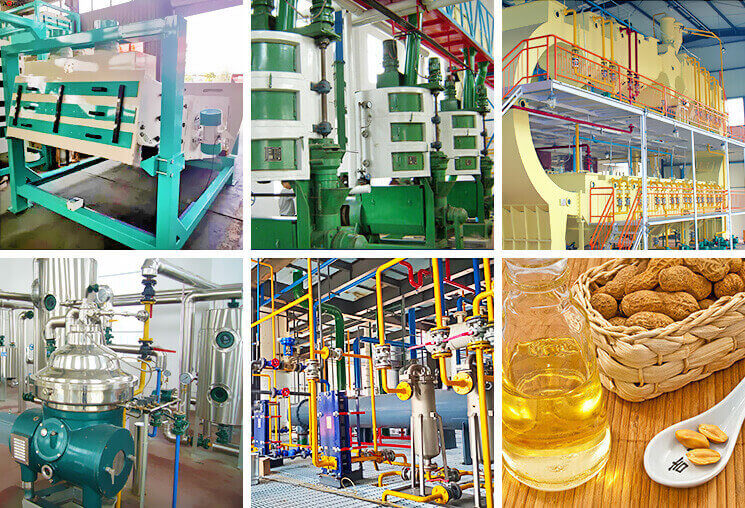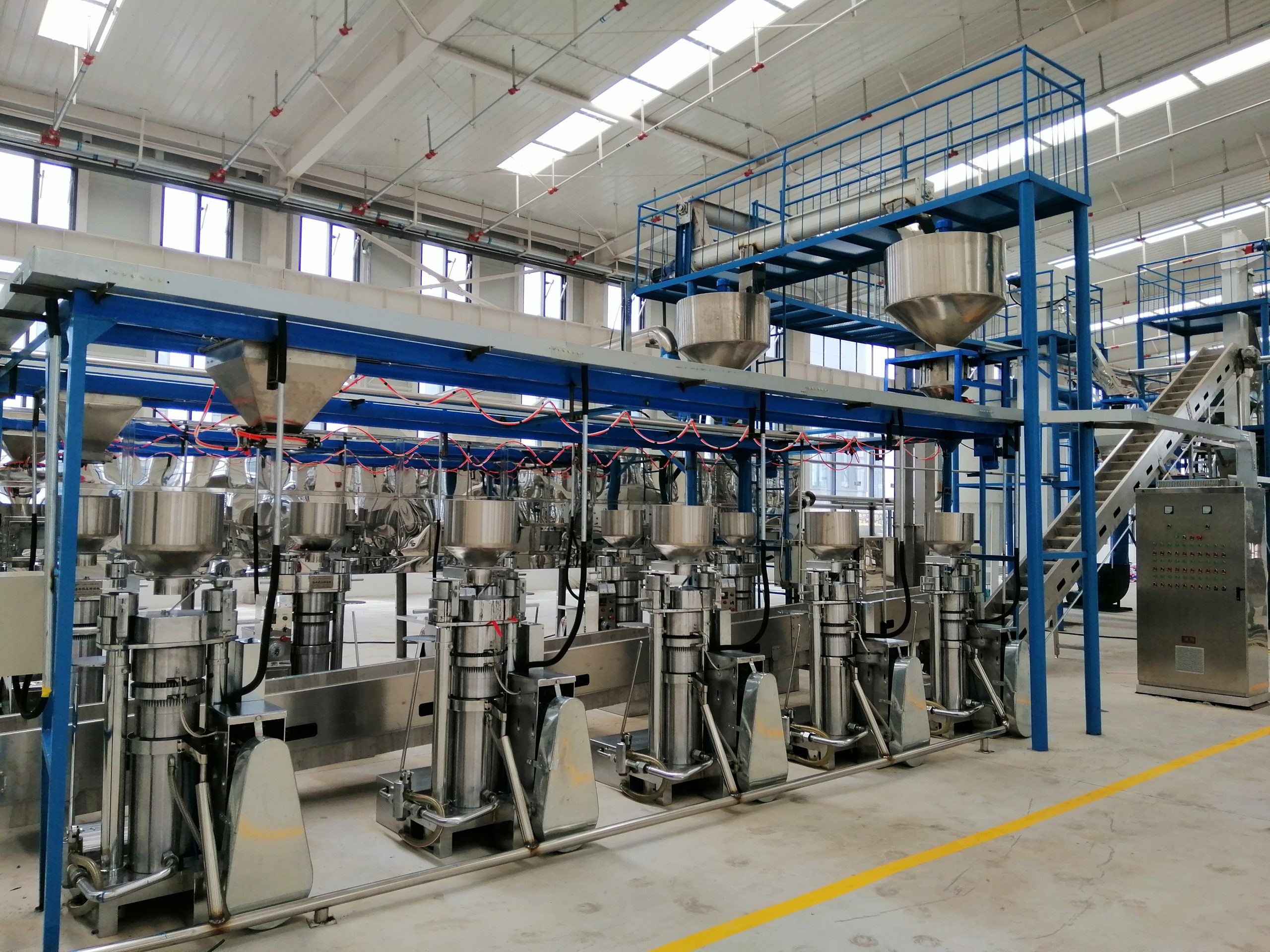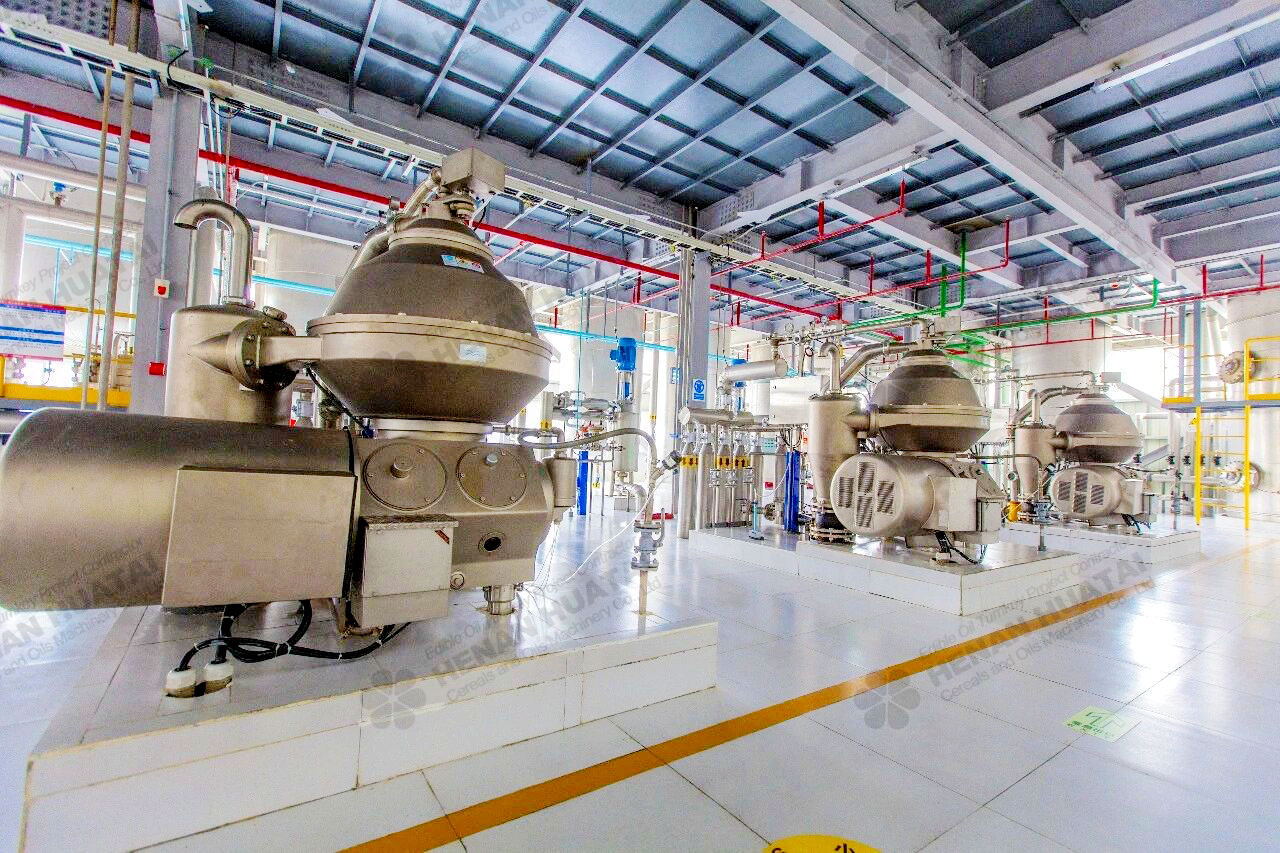China's largest edible oil processming machine manufacturer
China's largest edible oil processming machine manufacturer
The peanut pretreatment processes include cleaning, and separating of hull & kernels. According to pressing temperature, there are two peanut oil pressing technologies: hot pressing and cold pressing. Crude peanut oil refining inludes degumming, deacidification, deodorization.

Peanut Cleaning
There are impurities in peanuts before processing. First, a vibrating screen is needed here to remove the impurities from peanut. After screening, the impurity content is no more than 0.5%, and the peanut kernel content in removed materials is no more than 1%. Then the stone is separated from peanut by a destoning machine.
Peanut Shelling and Separating of Hull & Kernels
When the peanut sheller works, the peanuts are delivered into the hopper quantitatively, uniformly and continuously. Under the repeated strike, friction and collision of the rotor, the peanut hulls are broken. Then the peanut kernels and broken hulls pass through the sieve in a certain hole diameter (the sieve of big hole diameter for first shelling, and small hole diameter for second cleaning). Under the blow force of rotating fan, the peanut husks in lightweight are blown outside, and the peanut kernels pass through the sieve to achieve the cleaning effect.
Peanut Crushing
The purpose of this process is to crush the peanut into a certain granularity, which can meet the condition for flaking. After crushing, the surface area of peanut is increased, better for the transfer of temperature and moisture when softening.
Softening, Flaking, Cooking
The peanut kernel is soft, normally it does not need to be softened. Sometimes it can be flaked directly only after the suitable heat treatment.
Generally, cooking is adjusted according to the conditions required for hot pressing. When the moisture content is close to 1-2% and the temperature reaches 120-130℃, it is time to finish cooking and begin to press.

The peanut pressing processes can be divided into three stages, which are feeding stage, main pressing stage, and cake forming stage. The most common peanut oil pressing machine is the screw oil press.
Hot pressing is the traditional method of pressing peanut oil. With a high rate of oil output, good taste, and convenient storage, it is popular for home use. But because of the high production temperature, the peanut protein is usually severely denatured and lose plenty of nutrients.
Cold pressing technology is often applied in large peanut oil production plant. The production temperature is conducted under 60℃, which is beneficial to preserve the nutrients and comprehensively utilize peanut protein in peanut oil. The disadvantage is low oil yield, not suitable for small oil plant.
The pressed peanut meal cakes can be used as animal feed, or the residual oil can be further extracted through the extraction process.
After a long period of precipitation, the crude peanut oil can be filtered by a filter and sent to a refining plant. The pressed cake can be crushed and sent to a extraction plant for secondary extraction, extraction oil is refined and sold as ordinary oil.

Refining is to remove impurities, odors and pigments from peanut oil and improve the quality and taste of the oil. The refining process mainly includes steps such as degumming, deacidification, decolorization and deodorization.
Degumming mainly removes phospholipids and other colloidal substances from peanut oil. By heating and adding chemical reagents, colloidal substances such as phospholipids are aggregated into larger particles, which are then removed by centrifugation or filtration.
Deacidification is to reduce the free fatty acid content in peanut oil. Alkaline refining or distillation is usually used for deacidification. The alkali refining method is to add an appropriate amount of alkali solution to neutralize the free fatty acids to generate soap stock and glycerol, and then remove the soap stock through centrifugation or filtration.
Decolorization mainly removes pigments from peanut oil to make the color of the oil clearer. Adsorption decolorization method is usually used, that is, adsorbents such as activated carbon are used to absorb pigments and other impurities in oil.
Deodorization to remove odors and volatile substances from peanut oil and improve the taste and stability of the oil. Deodorization usually uses high-temperature vacuum distillation, under high temperature and vacuum conditions, the odor components in peanut oil are volatilized and removed through condensation collection.
During the deacidification and deodorization process, free fatty acids and low molecular weight substances are distilled out under high temperature vacuum and direct steam conditions. The physical refining deodorization temperature is higher than the conventional temperature. Generally around 260 degrees. During the operation, attention should be paid to rapid temperature rise, balancing the flow of the inlet to be deodorized and the finished oil, and strictly controlling the deodorization time, etc. This is directly related to the technological level of oil refining equipment.
The refined peanut oil is cooled, filled and sealed through automated packaging equipment for storage and sale.

Huatai Oil Machinery, was founded in 1988, which is a large-scale oil project manufacturing enterprise.
We use cookies to improve your experience on our site. By using our site, you consent to cookies.
Manage your cookie preferences below:
Essential cookies enable basic functions and are necessary for the proper function of the website.